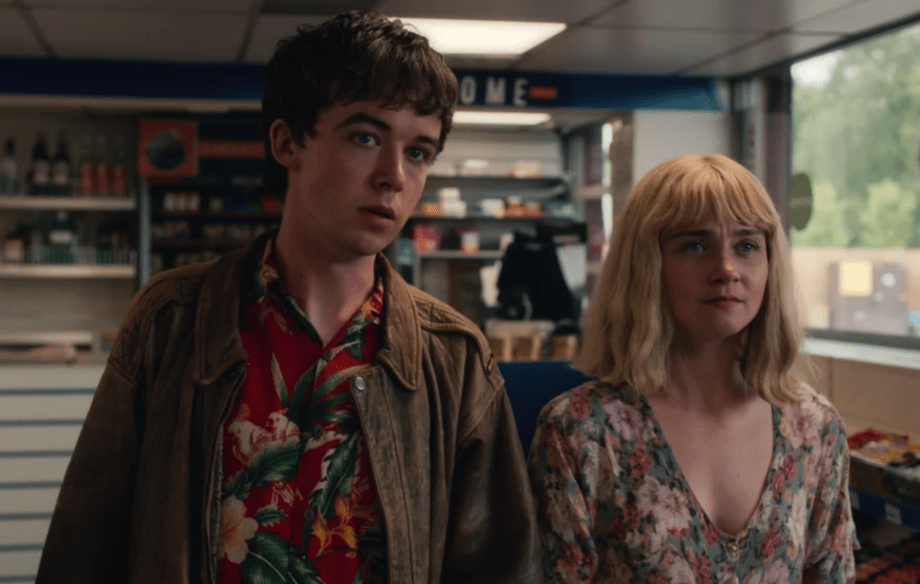
Way back in January 2018, a sad, funny, quirky little show from the UK came on Netflix and captured America’s hearts for approximately one week. That show was called The End of the F***ing World, based on the Charles Forsman graphic novel of the same name. With only 8 short episodes, ranging from 18-22 minutes in length, about depressed teens falling in love while on the run, the series was largely viewed as perfect as is, and, as much as everyone loved Alex Lawther and Jessica Barden in their starring roles, there was no need to go back and resolve the cliffhanger that ended the miniseries, where Lawther’s James was fleeing from police as shots rang out and the screen cut to black.
This series, however, was such a success, both for Channel 4, which broadcast the series in the UK, and for Netflix internationally, that a second season was all but inevitable. I enjoyed the first season well enough, but I did find the way many critics held its ending in such high esteem and their insistence that it was a perfect work as is to be confusing. Television as a medium has always been driven by an impulse to serialize and explore what happens in the aftermath of a story as much as it cares about telling a story with a satisfying conclusion. Sure, the cliffhanger was an artistically bold conclusion, but for a series that was at its best observing and exploring the darkest corners of the depressed teenaged id, seeing what happens after the chaotically romantic conclusion seemed quite appropriate.
When episode one of season two opens up, however, we are denied any details of that aftermath. Instead, we spend the entire opening installment becoming acquainted with this season’s antagonist, a disturbed young woman named Bonnie. We learn all about the absurd abuse she suffered at the hands of her mother, the unhealthy relationship she entered into with a much older man (who we quickly realize is the professor our teens murdered in season one) and how it led to her committing vehicular homicide to protect him from a student accusing him of sexual misconduct, and how she has made it her life’s mission to murder James and Alyssa as revenge for killing her beloved almost boyfriend.
Later episodes catch the viewers up with what James and Alyssa have been up to in the last year or two since that fateful day on the beach. Their stories are told in typically stylish fashion, with lots of deadpan voiceover and quick cuts speeding us back and forth through time, but the short version is simple. They are both alone, emotionally and physically isolated from the outside world and wholly unable to process or move past the trauma they suffered in season one.
I often found the crime and violence aspects of season one to be needless contrivances that artificially upped the stakes of a story I was already deeply invested in based solely on the central relationship, which mainly consisted of depressed teens who spent a life time feeling alienated finally crossing paths with someone who could give meaning and joy to their lives if only they could get out of their own way. As such, I was very happy to see the series continue its work of painfully exploring the trauma and alienation of being alive in the world for James and Alyssa. The way these two crash into each other without being able to really make sense of their connection or why they continue to feel drawn to each other is well executed, through clever construction and layered performances. Their relationship remains the highlight of the series.
However, the crime and violence is unfortunately an inextricable component to this series as well, and, even worse than in season one, those elements don’t work in season two. This time around, it’s Bonnie bringing the criminal intrigue and violence as a complicating factor for our would-be love birds, and she just doesn’t work as a believable character. Naomi Ackie, who plays Bonnie, is working overtime to make Bonnie feel like an actual person, with an interior life twisted and tortured by the trauma of her youth and grief for the one person who ever showed her any tenderness. However, she’s often asked to present Bonnie as so alien and calculating that it’s genuinely difficult to find her anything beyond the vengeful comic book antagonist she’s asked to be from scene to scene.
Still, The End of the F***ing World contains a lot of humor and and lot of heart within its densely packed eight-episode second season. Fans of the first season will be far from let down, and new viewers could still find plenty to like, though they may be better off watching the very brief first season to have a greater emotional investment in our young, doomed lovers.
The End of the F***ing World Season 2 is currently streaming on Netflix.
https://www.youtube.com/watch?v=8XvFO83LXBE

